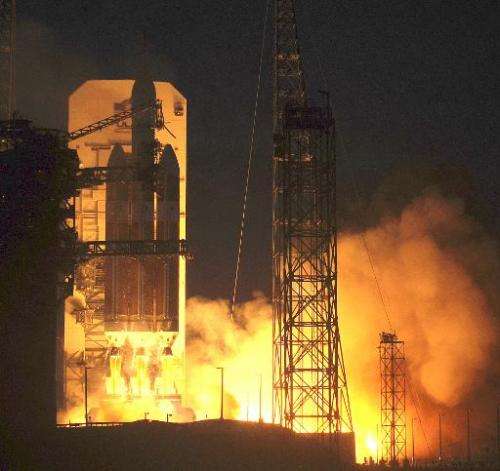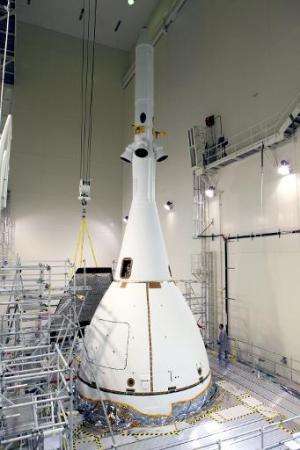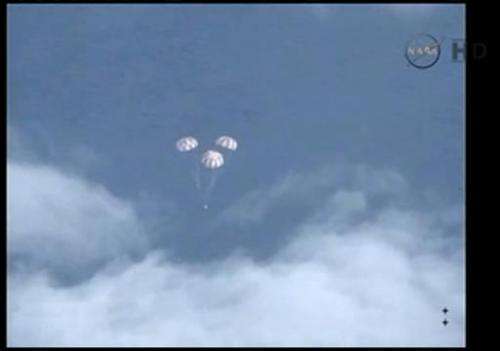Orion launch is trial by fire for Apollo-era heat shield

NASA's Orion vehicle aims to carry humans farther into space than ever before, but its protective heat shield is basically the same as that used for the Apollo Moon missions four decades ago.
"We know it worked," said Orion program manager Mark Geyer after the test flight of concluded successfully on Friday.
But Geyer and others are eager for a closer look at exactly how well the shield performed in the coming days, after describing the cover as a key element of the first-ever space launch of the United States' new multipurpose capsule destined to someday take astronauts to the Moon, an asteroid or Mars.
"We need something to protect the astronauts who are going to be inside," said Jim Tibaudo, director of business development at Textron systems, which makes the shield at its factory in Wilmington, Massachusetts.
5,000 degrees Fahrenheit (2,200
As many as eight years ago, NASA solicited bids for a material that might outperform the kind used for the Apollo missions decades earlier, and found that Avcoat—a coating that burns away as the spacecraft heats up—was still the best.
"We need something to protect the astronauts who are going to be inside," said Jim Tibaudo, director of business development at Textron systems, which makes the shield at its factory in Wilmington, Massachusetts.
"The material NASA chose to use is the same material that was used back in the Apollo program in the 60s," Tibaudo told AFP.

The peanut-butter-colored Avcoat shield is 16.5 feet (five-meters) in diameter and covers the bottom of the gumdrop shaped spacecraft, which is about 30 percent larger than the Apollo modules and is built to carry four people at a time.
The shield is built around a titanium skeleton and carbon fiber skin. A fiberglass overlay contains 320,000 cells that are filled with Avcoat.
The wide, bottom portion of the capsule should take the brunt of the heat as it plunges through Earth's atmosphere in its return from deep space.
Relearning an old process
People had to relearn how to make the heat shield, since it had been out of production for decades. The shield aboard Orion on Friday took eight months to make.
"Our material, when it is cured, becomes one monolithic piece and we don't have to worry about the seams of the individual tiles and that is one advantage," Tibaudo said.
A separate part of the Orion flight test aims to see how the back shell, or the portion covering the sides of the spacecraft, might fare if pummelled by space debris on its journey, NASA spokeswoman Brandi Dean said.

The sides of the capsule are protected by tiles similar to those that coated the bellies of the space shuttle fleet over an area that will reach up to 3,150 degrees Fahrenheit.
"Two small holes have been drilled into two of the tiles in Orion's back shell. One is one inch (2.5 centimetres) deep and the second is 1.4 inches deep," she said.
After the Pacific Ocean splashdown, experts planned to give the spacecraft a close look to see how it performed, and compare it to photos of the returning Apollo modules.
"For us, I think the first thing to see is, was it good enough to land in the ocean? Is it in one piece?" said Tibaudo.
"The surface will be charred, it will look like it is burned. We are hoping it is relatively smooth," he added.
"You could eventually have a catastrophic failure if there is an uneven surface."
The spacecraft was to stay powered up for one hour after it splashed down in the Pacific Ocean to allow Lockheed Martin to gather data on how it performed.
© 2014 AFP




















